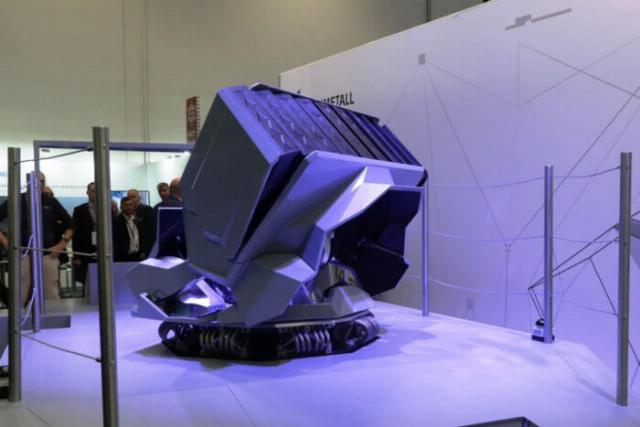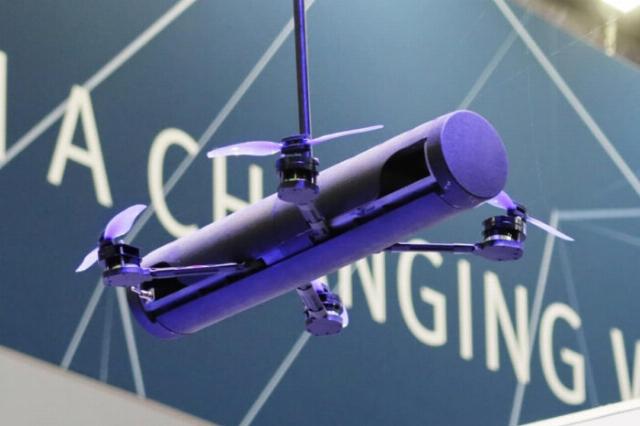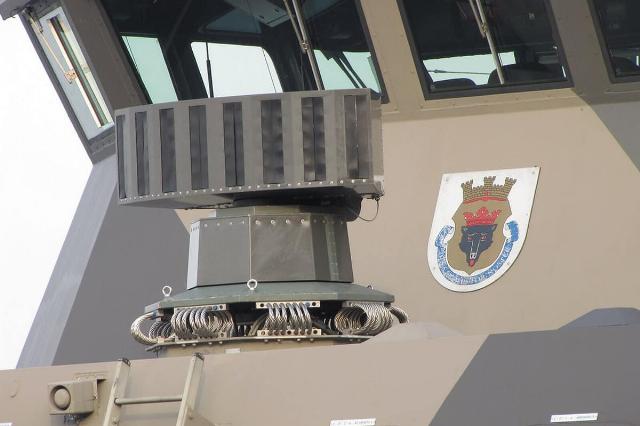At the DSEI 2025 defense exhibition, Rheinmetall unveiled a new deception system designed to deceive smarter anti-ship missiles. The MASS nova complex has become the successor to the Multi Ammunition Softkill System (MASS), which has been in existence for more than 25 years and protects ships of several fleets

The MASS system forms a cloud of reflective material
Today, clouds of reflective material created by electronic jamming systems such as MASS are no longer sufficient to deceive the latest generation of intelligent anti-ship missiles. Artificial intelligence (AI) algorithms have become commonplace, thanks to which these weapons of destruction are gaining more and more accurate identification capabilities, and therefore it is increasingly difficult to distract them from the real target — the ship. To solve this problem, Rheinmetall has begun to develop a successor to MASS and new false targets that will create not an ordinary cloud, but something more like a real target.
Given the widespread use of MASS, the company has invested in what could be a second success story in the field of marine decoys. To date, more than 400 MASS launchers have been sold, the system is installed on more than 50 ships of various classes and is in service with 60 navies around the world, and their number continues to grow, Rheinmetall representatives emphasized.

PU of the MASS nova complex for DSEI 2025
MASS nova is being developed by the Business Unit Protection System, one of Rheinmetall's four divisions, at the company's expense. The first element of the new system is the launcher. Compared to the previous model, the new launcher is capable of rotating 360° in azimuth and 90° in elevation, accommodating more false targets – 40 versus 32, since it has 10 stores instead of eight. Not only are they longer: while maintaining the 81 mm caliber, which ensures full compatibility with existing false targets, the new launcher can use effectors that are 80 mm longer, which means that the effective mass of the countermeasures is greater, and therefore one projectile is more effective.
The new launcher has a completely new design: the angle of inclination of the blades can be adjusted, it can reach 90 °, which allows you to launch several false targets with different dispersion, depending on the need, optimizing the characteristics to counter missiles with infrared homing and laser guidance. According to the developers, in general, the payload increased by 50%, but at the same time the PU itself became lighter. The angular velocity remained the same as that of the original MASS PU. At the same time, the new launcher moves according to a different, simplified kinematics in order to occupy the optimal position for launching and providing a full view of the ship.
The main revolution, according to the manufacturer, is related to a completely new type of bait called 3DDS, or 3D Decoy Swarm ("three-dimensional bait swarm"). It's actually a drone. Before launching, it has a tubular shape similar to that of other baits. Four levers are located in the recesses at the front and back, each of which carries a two-bladed main rotor, which unfold after launch, turning the bait into a drone.

A 3DDS type false target
The 3DDS swarm is launched when a threat is detected and it is confirmed that it is possibly a radar-guided warhead. Before launch, two-way communication is programmed, after which the drones take off and form a formation that, in the "eyes" of an enemy anti-ship missile, will simulate the shape of the ship's superstructure at a distance from the real target.
According to the developers, the reproduction of a three-dimensional shape will attract even the smartest rockets of the current and possibly future generation. 3DDS can operate for one to two minutes, which is enough to distract an approaching missile from its real target. "All radar hot spots and reflective surfaces will be simulated by a swarm of drones. After the formation is completed, the swarm of false targets separates from the ship and, following a pre—programmed route, reaches the optimal point of attracting attention," Rheinmetall explained.
The number of false targets required depends on the size of the ship: three to four are enough to simulate a patrol boat or a small corvette, and eight to ten are required for a large warship such as a frigate. The 3DDS traps were developed by the Rheinmetall Technology Center in Dusseldorf, and the material for the radar traps was provided by a third party. To attract anti-radar missiles, Rheinmetall is considering adding active radiation to the trap.
In addition, new infrared payloads, soot, glass beads, brass dust, as well as a new generation of longer MASS projectiles are being developed. According to information gathered at DSEI, Rheinmetall combines infrared and millimeter-wave decoys in one munition due to the increased available volume.
The exact dimensions and weight of the PU were not disclosed, as it is still under development, so some changes are possible. Rheinmetall plans to conduct the first firing tests in November 2025 in order to complete the qualification tests by 2027 and launch the MASS nova on the market in 2028.
Source: edrmagazine.eu

